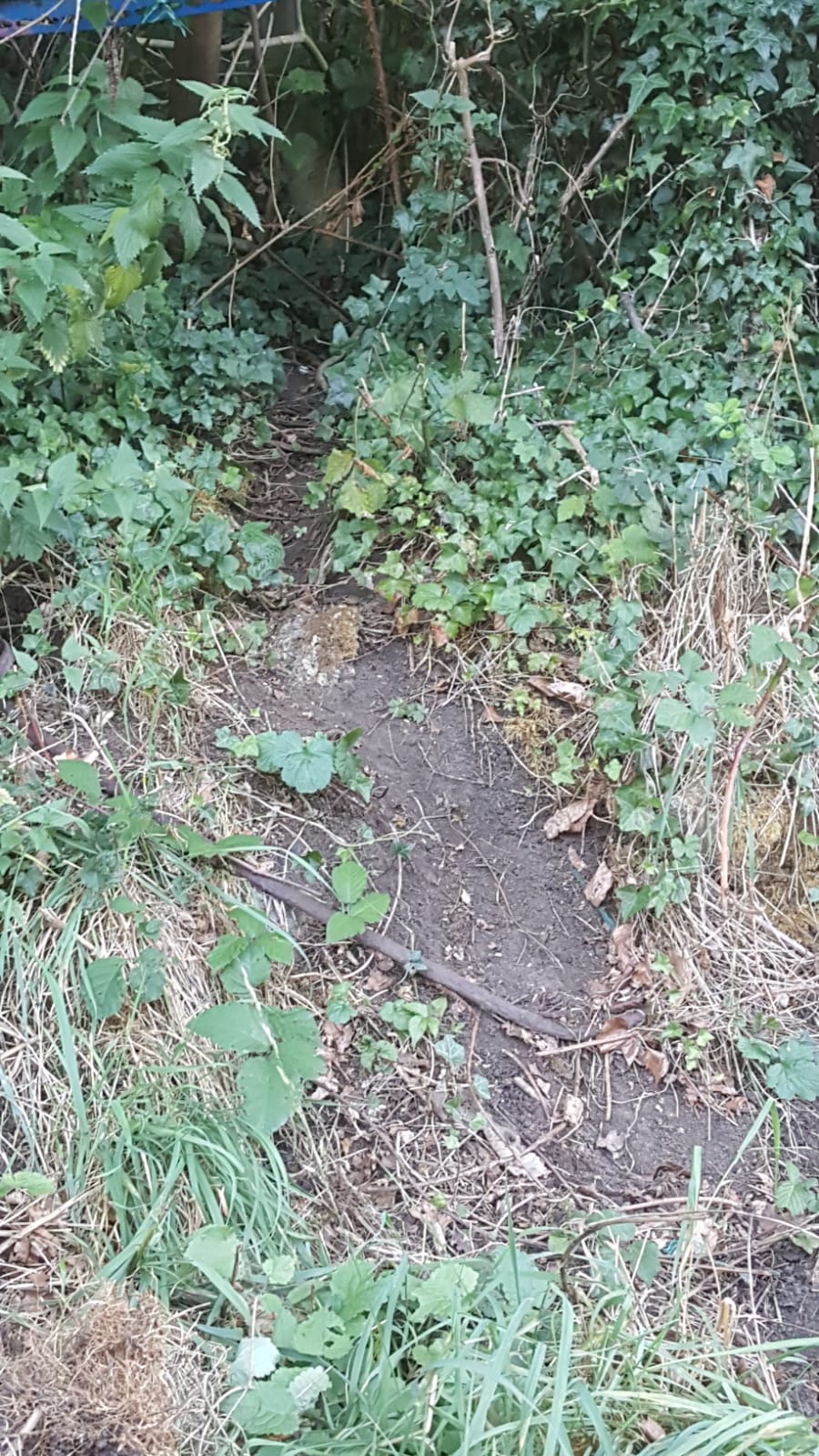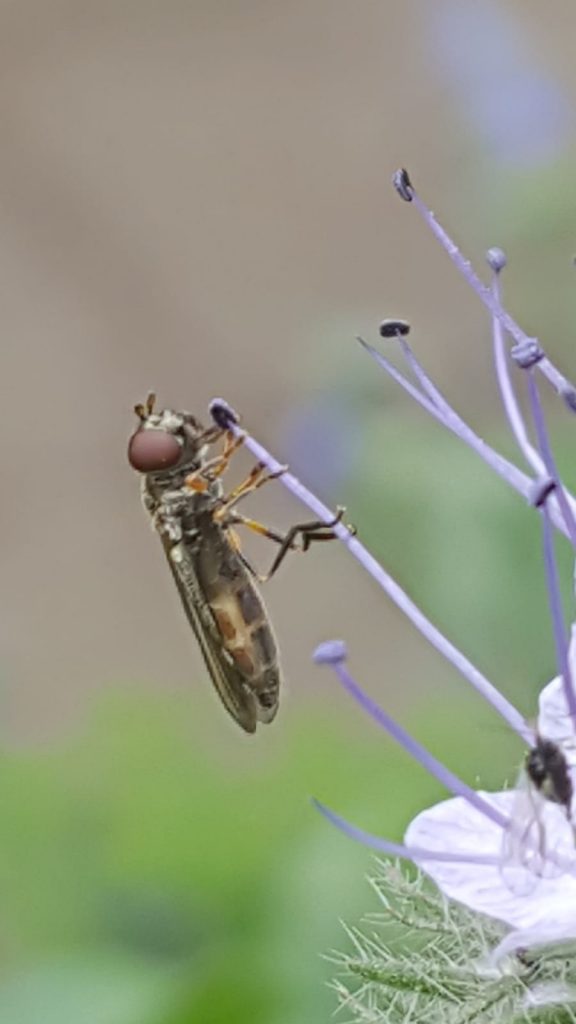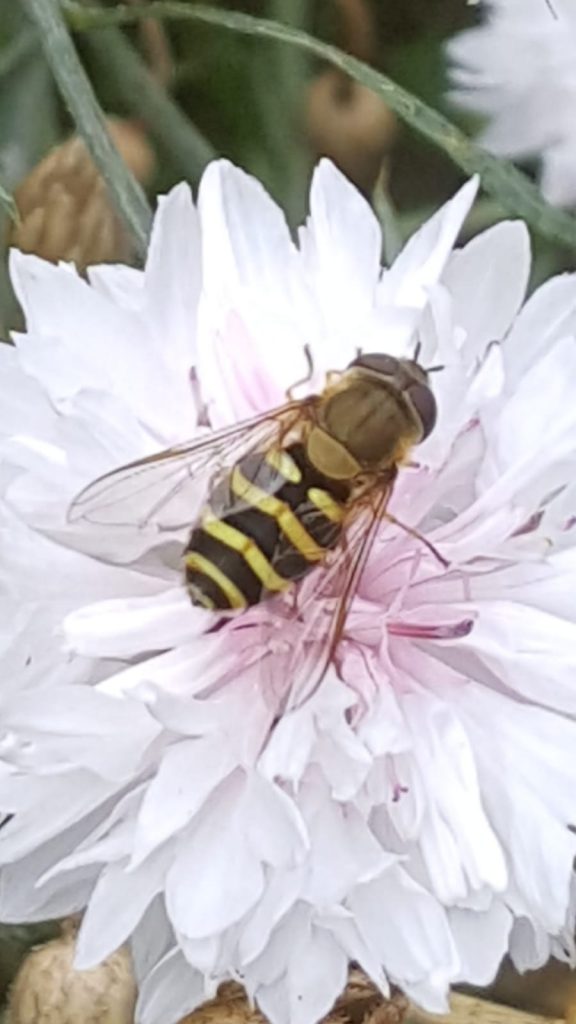I know that I’m stating the obvious when I say that it has been feeling more autumnal in the last week. With the cooler temperatures, the darkening evenings and the behaviour of the wildlife, all being obviously signs that nature was gearing up to the arrival of the forthcoming winter. With the way our weather patterns have been changing in recent times, we can never be quite sure of what September, or any other month come to that, will bring us and this year seems to be more old fashioned so far which is why I started some serious management work in the last week.
As I have previously stated, nothing had been done to the area for at least ten years and the deep rooted pest species were very well established. To the gardeners amongst you the names of the species will be very familiar to you. Bramble, Creeping Buttercup, Herb Robert and various Dock species are very well known problem species to gardeners and conservationists.
Earlier in the year I had cut the whole of the area down to the ground and there has been a considerable amount of regrowth since then and this was the task I started to try and redress the balance. You can see why Brambles are a successful plant species! Their root systems are deep, extensive and difficult to dig out properly. I decided to dig down at least a couple of feet down into the earth to make sure I would not miss any of the problem species. Several of the Brambles roots took at least 20 minutes to dig out as their root systems were so well established.

This work has got to be carried out to try and ensure that the flower species that I was going to enjoy next spring had a chance of surviving. Knowing that the problem species involved at the site I knew I had a big task ahead of me in a) trying to remove them and b) stopping them re- invading next spring. The deep digging and the sieving carried on to try and lessen this risk. We will only see how well I have done come next spring and I know now that even if I think I have done my best I know there will still be Creeping buttercups and random Bramble shoots appearing. We shall see.
In between the digging and weeding the wildlife was busy all around me with the obligatory Robin often flitting down to pick up various invertebrates I was uncovering and ‘ the shy and wary ‘ as once described in old bird books, Wood Pigeons flying down to within a couple of metres of me to feed on similar food items as well as various grass shoots. Today’s Wood Pigeons are cheeky and almost fearless and I soon understood its’ voracious feeding when I watched it fly from the reserve up into an Ash tree where the high pitched calls of the squabs could easily be heard. From years of watching wildlife I know that unexpected things can happen and whilst digging out a heavy duty bramble root I heard a distinctive ‘ pronk ” call of a Raven. I looked up and there about 200 feet above me was a Raven heading in a south- westerly direction. Its’ massive size was emphasised when one of the local Carrion Crows decided to see off the Raven when it tried to sneak up behind and peck the Ravens tail or back. It didn’t get close enough to try as the Raven became aware of the crows presence and quickly swung/flew round to launch its massive bill in the crows direction. The Crow flew back to the safety of the woods behind the flats!
The flowers in the first planted area were continuing to attract Honey Bees and Common Carder Bees every day and one day I observed a Common Carder Bee feeding in the area and noted it taking nectar from six different flowering species. Many of the Bees seen are smaller male bees and they are busy collecting for their Queens before they hibernate. Many of these individuals are looking very worn and bald and are slowly falling to pieces and dying before the winter comes.

The attraction of flowers has brought in a number of Hoverflies and several species have been noted feeding on variety of flowers. They have given me some homework to do in trying to learn how to identify them. You are never bored when I it comes to learning about nature.

The work that needed to be carried out in the next few months was a continuation of trying to clear the last quarter of the site from the problem plant species and this was going to take quite a long time and a lot of hard work. I will not be bored for the next few weeks that’s for sure.
